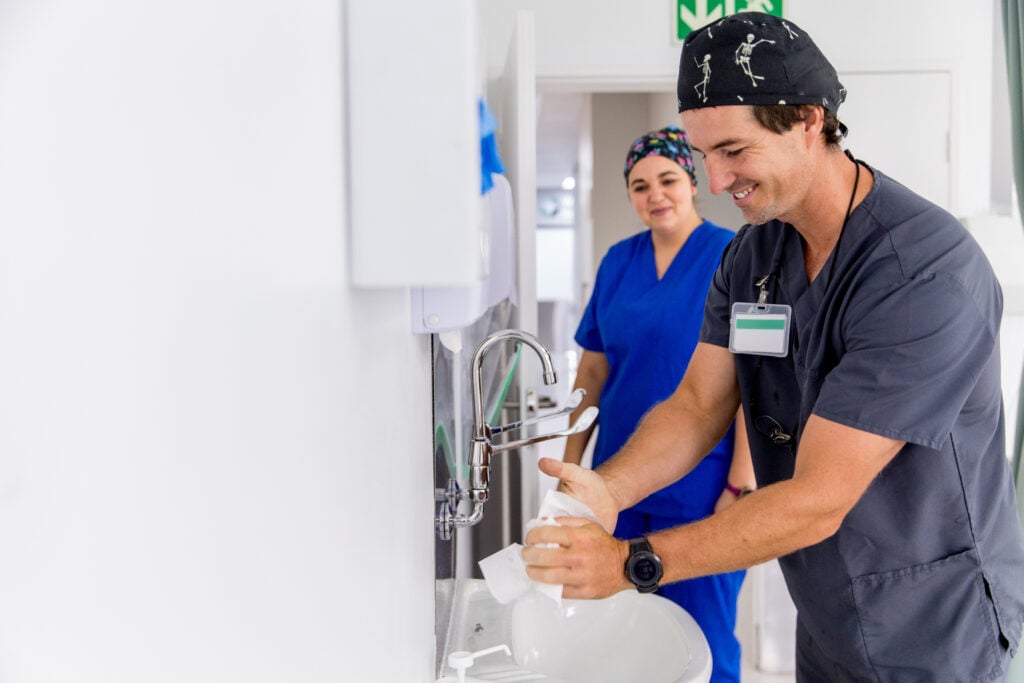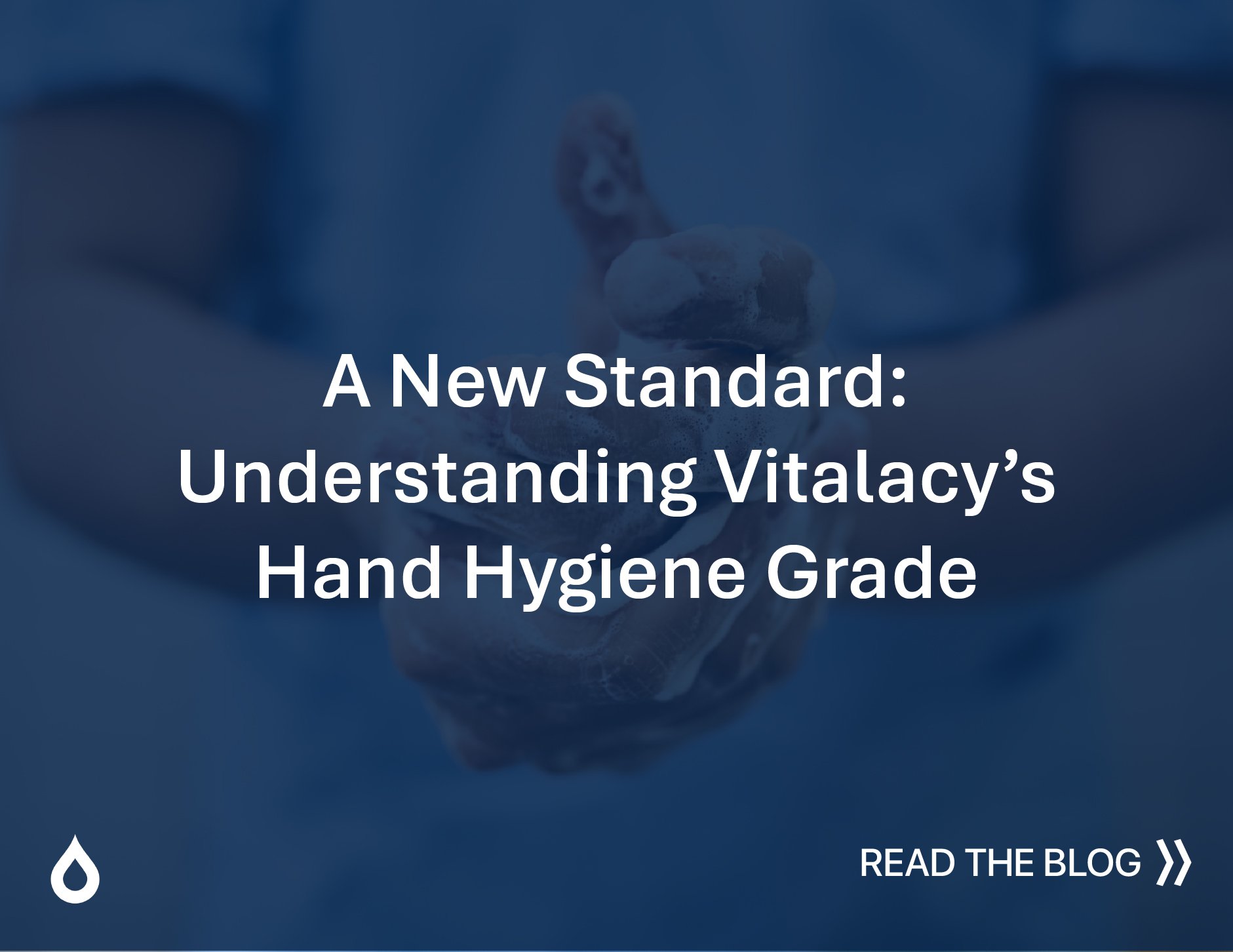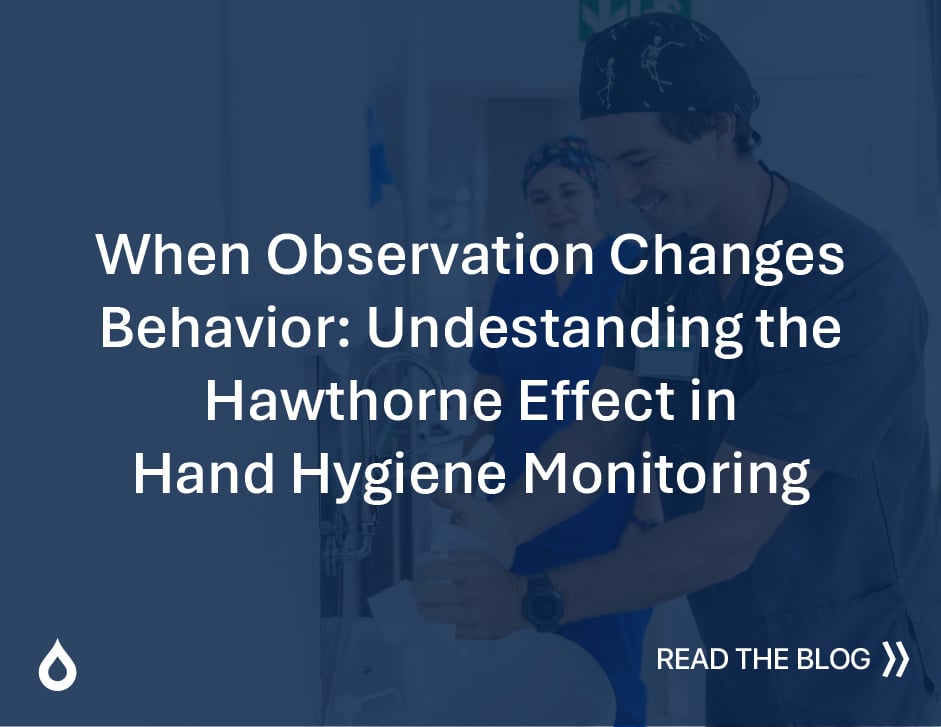The Challenge of Measuring True Compliance
For more than a decade, infection prevention programs have relied on direct observation as the gold standard for assessing hand hygiene compliance. Trained observers document whether healthcare workers disinfect their hands during the World Health Organization’s “5 Moments for Hand Hygiene” — before and after patient contact, before aseptic procedures, exposure to body fluids, and after touching patient surroundings.
But how accurate are these observations in reflecting real behavior?
A 2025 study published in the American Journal of Infection Control by researchers from Witten/Herdecke University and the HARTMANN Science Center reveals that simply observing healthcare workers can significantly alter their behavior. This well-documented phenomenon, known as the Hawthorne Effect, suggests that traditional observation methods may unintentionally distort the true rate of compliance in hospital settings.

What the Study Found
The researchers monitored over 476,000 hand disinfections across three hospital units — a normal unit, an intermediate care unit, and an intensive care unit — using a combination of direct observation and a 24/7 electronic monitoring system.
The results were striking:
- In patient rooms, hand disinfection increased by 27% to 31% during observation periods.
- In utility or waste rooms, disinfection actually decreased by 33% to 99% when observers were present.
- The magnitude of change varied by unit type, with the strongest effects seen in intensive and normal units.
The takeaway? Healthcare workers tend to perform better when they know they’re being watched — but that improvement isn’t uniform. In spaces perceived as “private” or secondary, observation may even discourage hand hygiene behavior.
Understanding the Hawthorne Effect
The Hawthorne Effect refers to a behavioral change that occurs when individuals know they are being observed. In the context of infection prevention, it means healthcare workers are more likely to sanitize their hands during visible patient interactions but may return to baseline behavior once observation ends.
This doesn’t reflect negligence — it reflects human nature. Awareness triggers self-consciousness, and self-consciousness temporarily boosts compliance. Once the observer leaves, habits often revert to normal.
The result: direct observation can overestimate true hand hygiene compliance, giving hospital leaders an inflated sense of performance.
Why This Matters for Hospitals
Hand hygiene remains the most effective and cost-efficient way to prevent healthcare-associated infections (HAIs). Yet even small inaccuracies in compliance data can lead to misinformed interventions, missed opportunities for improvement, and complacency in safety culture.
The German study underscores a key point: if our measurement tools are flawed, our improvement strategies will be too. When observation inflates compliance rates, hospitals may unknowingly underestimate infection risk — believing performance is higher than it truly is.
That’s why many infection prevention teams are turning to continuous electronic monitoring systems (EMS), which collect objective, round-the-clock data on dispenser use without the influence of human observation.
The Role of Electronic Monitoring Systems
Electronic hand hygiene monitoring systems like Vitalacy’s offer a more consistent and data-driven way to measure performance. These systems track when and where healthcare workers disinfect their hands, capturing high-volume, real-time data that paints a complete picture of compliance patterns.
Unlike direct observation, EMS data:
- Eliminates observer bias
- Captures behavior across all shifts, including nights and weekends
- Enables room-level and workflow-specific analysis
- Provides reliable benchmarks for long-term improvement
Importantly, electronic systems do not replace human engagement — they enhance it. Infection preventionists can use EMS data to identify specific problem areas, tailor education, and validate progress through transparent feedback loops.
In the study, electronic data provided crucial insight into how and where the Hawthorne Effect occurred, helping researchers quantify both increases and decreases in hand disinfection activity. This kind of granularity is only possible through automated, sensor-based systems.
A Balanced Approach: Observation + Automation
The findings do not suggest abandoning direct observation altogether. Observation provides context — understanding the “why” behind noncompliance, identifying workflow obstacles, and reinforcing education.
However, observation should be viewed as a complementary tool to electronic monitoring, not a standalone metric. The combination of both approaches creates a balanced system:
- Electronic data ensures accuracy and coverage.
- Direct observation adds human insight and qualitative understanding.
Together, they provide infection prevention teams with the visibility and confidence needed to make informed, targeted interventions.
Building a Culture of Accountability and Insight
Vitalacy’s mission is to make hospitals safer by giving teams actionable, unbiased insights into hand hygiene behavior. The lesson from this study aligns perfectly with that vision: true improvement comes from clarity, not surveillance.
When staff understand that monitoring exists to support—not punish—their performance, trust and engagement rise. Vitalacy partners with hospitals to create a positive feedback culture through:
- Transparent dashboards that show progress over time
- Role-based reporting for nurses, managers, and infection preventionists
- Integration with education and recognition programs
- Non-intrusive wearables and dispenser sensors designed for comfort and accuracy
By combining behavioral science with technology, hospitals can move beyond compliance tracking toward a sustainable culture of patient safety.
The Takeaway
Observation changes behavior — and that’s precisely why objective monitoring matters. The American Journal of Infection Control study highlights that hand hygiene rates may appear higher under observation than they truly are, reinforcing the need for continuous, data-backed measurement.
Infection prevention is most effective when hospitals can trust their data. By adopting modern electronic monitoring systems alongside education and leadership engagement, organizations gain the clarity to improve outcomes, reduce HAIs, and protect patients and staff alike.
Ready to see how accurate data can transform your infection prevention strategy?
Learn how Vitalacy helps hospitals move beyond observation toward measurable, sustainable safety improvement. Schedule a demo today!
References
Author
-

Vitalacy is committed to reducing patient harm in healthcare through better hand hygiene and patient safety solutions. Bluetooth-enabled smart sensors and wearables help improve outcomes and Leapfrog Hospital Safety Grades.
View all posts




